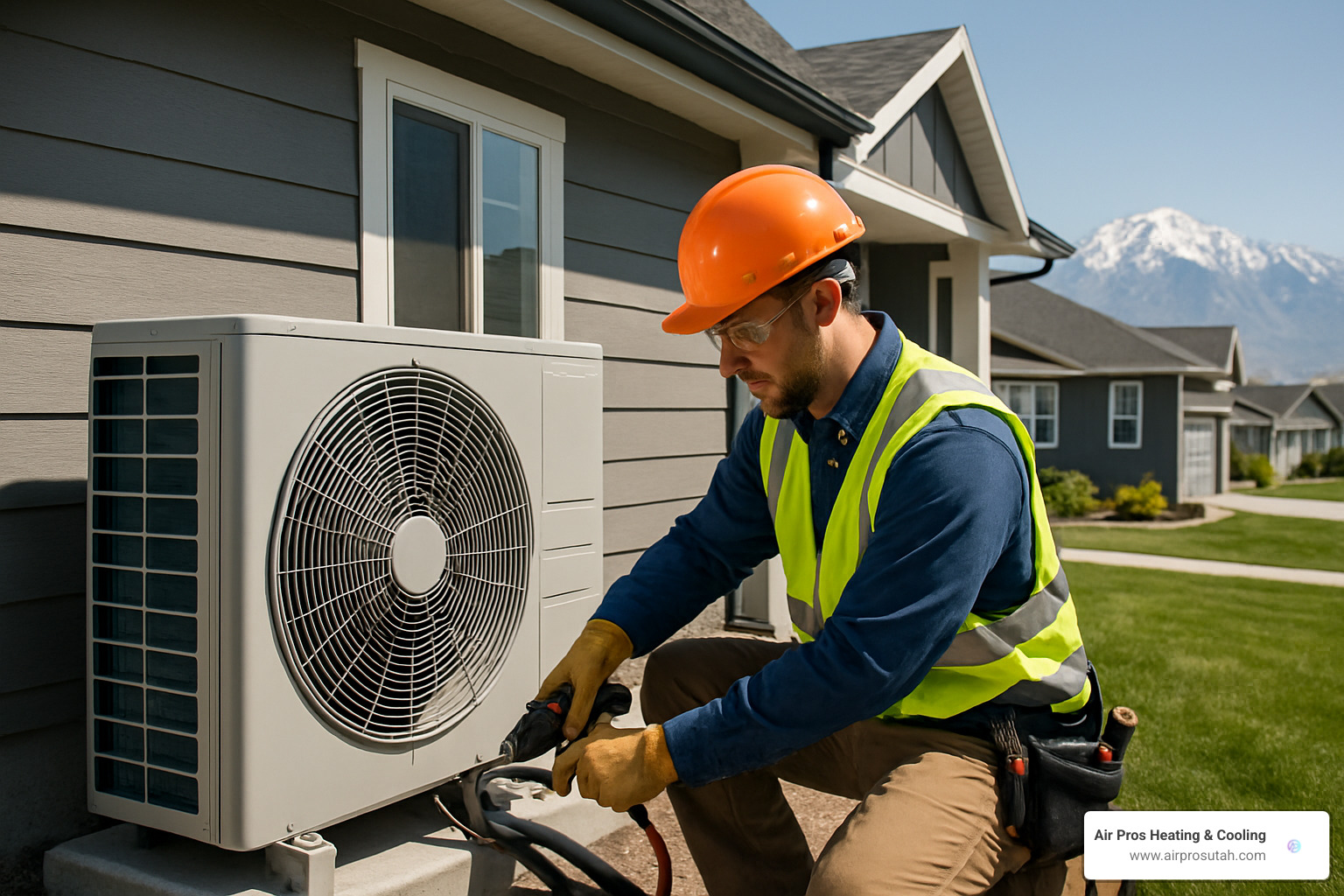
How to Start a Heat Pump Installation in 5 Simple Steps
Why Heat Pump Installation Is Your Best Move for Utah's Climate
Heat pump installation is becoming the smart choice for Utah homeowners who want year-round comfort, lower energy bills, and a more sustainable heating solution. Unlike traditional systems that generate heat, heat pumps transfer existing heat from outside air (even in cold weather) to warm your home in winter and reverse the process to cool it in summer.
Here's what heat pump installation typically involves:
- Home assessment - Load calculation, ductwork inspection, and electrical capacity check
- System selection - Choose between air-source, ground-source, ducted, or ductless options
- Permits and preparation - Site prep, electrical upgrades, and equipment ordering
- Professional installation - 4-8 hour process including old equipment removal and system commissioning
- Post-installation care - Maintenance schedule and performance monitoring
Heat pumps can reduce your heating electricity use by up to 75% compared to electric resistance heating like baseboard heaters or electric furnaces. They're also highly durable systems that last 15-20 years with proper maintenance.
The technology works by using a refrigeration cycle to extract heat from outdoor air - even when it's well below freezing. Modern cold-climate heat pumps can operate efficiently down to -20°F, making them perfect for Utah's mountain climate.
What makes heat pump installation particularly attractive right now is the combination of energy savings and available incentives. The average installation cost in Canada is $8,500 for a mid-range system, but Utah homeowners can save thousands through federal tax credits and local utility rebates.
I'm Alex Wiltz, founder of Air Pros Utah Heating & Cooling, and I've been working with heat pump installation since my high school days in specialized HVAC trade programs. My team and I have helped hundreds of Utah families make the switch to efficient heat pump systems that keep them comfortable year-round.
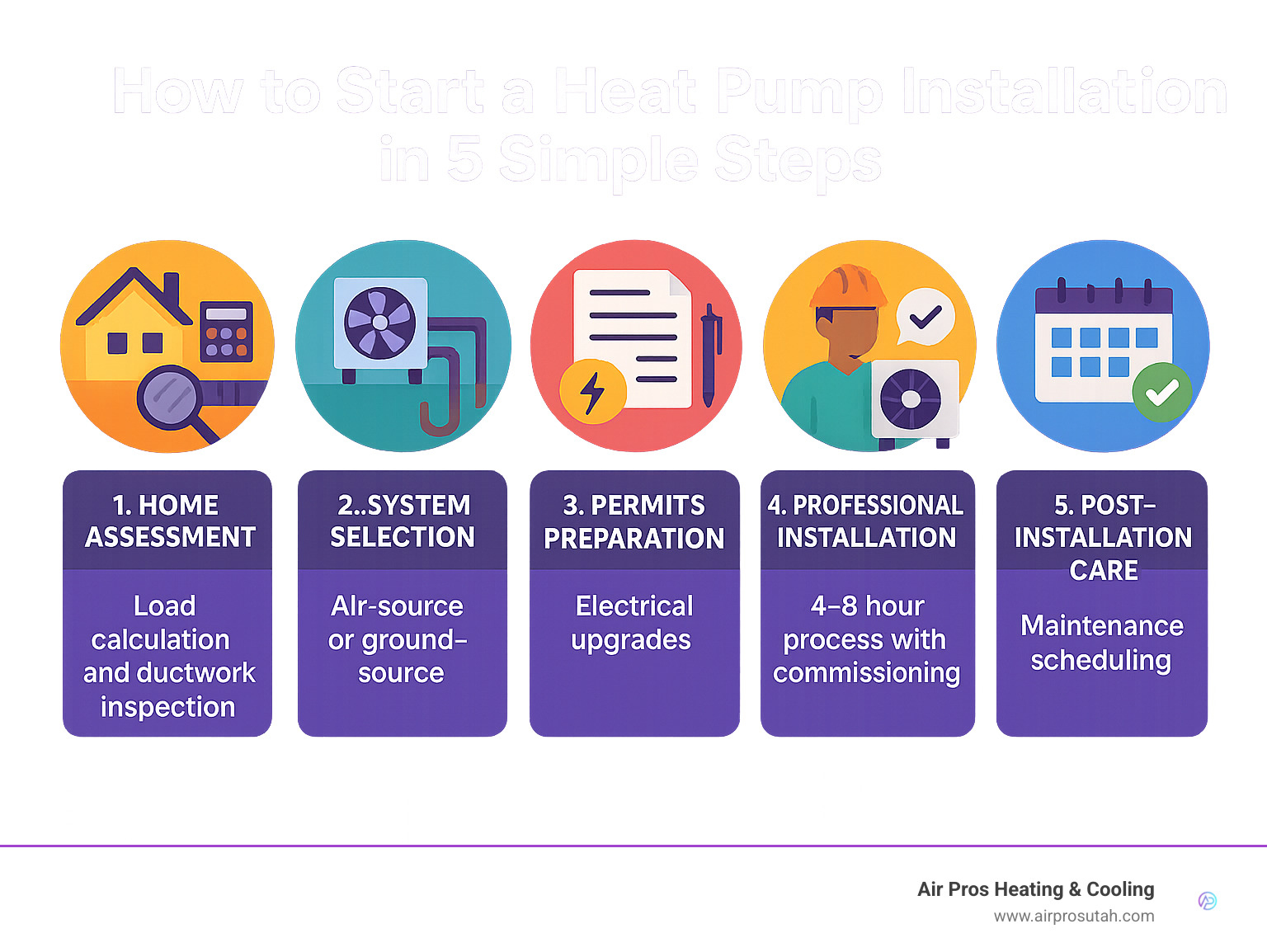
Why a Heat Pump?
Heat pumps offer compelling advantages that make them increasingly popular among Utah homeowners. First, they provide both heating and cooling in one system, eliminating the need for separate furnaces and air conditioners. This dual-mode operation means you get year-round comfort from a single, efficient unit.
From an environmental perspective, heat pumps are game-changers. They use electricity to move heat rather than burn fossil fuels, which significantly reduces your home's carbon footprint. When paired with Utah's growing renewable energy grid, heat pumps become an even more sustainable choice.
The efficiency numbers speak for themselves. While even the best gas furnaces max out at 98% efficiency, heat pumps can achieve efficiency levels approaching 400%. This means they produce four times more heat energy than the electricity they consume - a feat that's physically impossible with traditional heating systems.
Step 1: Confirm Your Home Is Heat-Pump Ready
Before diving into heat pump installation, we need to ensure your home is properly prepared. This assessment phase is crucial because, according to government research, up to 90% of HVAC systems are installed incorrectly, often due to inadequate preparation and sizing.
The first step involves evaluating your home's thermal envelope - essentially how well your house holds onto conditioned air. We look at insulation levels in walls, attics, and basements, check for air leaks around windows and doors, and assess overall building tightness. Poor insulation or significant air leakage can force a heat pump to work harder than necessary, reducing efficiency and comfort.
Your home's climate zone matters too. Utah's diverse geography means homes in Park City face different challenges than those in Salt Lake City or St. George. We factor in your specific location's temperature extremes, humidity levels, and seasonal variations to ensure proper system selection.
Existing ductwork requires careful inspection. We measure airflow capacity, check for leaks, and assess whether ducts are properly sized and insulated. The good news is that many Utah homes built in the last 30 years have adequate ductwork that can be adapted for heat pump use with minor modifications.
Electrical capacity is another critical factor. Heat pumps typically require 220-240V service and dedicated circuits. Older homes may need electrical upgrades, which we identify during the assessment phase to avoid surprises later.
Perform a Professional Load Calculation
This is where proper heat pump installation separates the professionals from the amateurs. A Manual J load calculation is the gold standard for sizing HVAC equipment correctly. This detailed analysis considers your home's square footage, insulation levels, window types and orientations, ceiling heights, number of occupants, and local climate data.
We also follow CSA F-280 guidelines, which provide additional precision for cold-climate installations. These calculations help us avoid the oversizing trap that plagues many installations. An oversized heat pump cycles on and off frequently, reducing efficiency and creating uncomfortable temperature swings.
The Manual J Load Calculation process typically takes 1-2 hours and involves measuring every room, cataloging insulation types, and inputting data into specialized software. This investment in proper sizing pays dividends in comfort and efficiency for the system's entire lifespan.
Evaluate Existing Ducts or Go Ductless
Ductwork evaluation is a crucial part of the assessment process. We inspect existing ducts for proper sizing, sealing, and insulation. Heat pumps typically move more air than traditional furnaces, so undersized ducts can restrict airflow and reduce efficiency.
For homes without existing ductwork or those with inadequate systems, ductless mini-split systems offer an excellent alternative. Our Ductless Mini Split Systems provide room-by-room climate control, exceptional energy efficiency, and minimal installation disruption.
Ductless systems are particularly well-suited for Utah's diverse home styles, from historic Salt Lake City bungalows to modern Park City mountain homes. They allow you to heat and cool only the spaces you're using, which can provide additional energy savings beyond what traditional ducted systems offer.
Step 2: Pick the Right Heat Pump Type & Size
Selecting the right heat pump involves balancing efficiency, cost, and your home's specific needs. The two main categories are air-source and ground-source (geothermal) systems, each with distinct advantages and considerations.
Air-source heat pumps are the most common choice for Utah homeowners. They're less expensive to install, require minimal site preparation, and modern cold-climate models work efficiently even when outdoor temperatures drop well below freezing. These systems can be either ducted (connecting to existing ductwork) or ductless (individual room units).
Ground-source heat pumps tap into the earth's stable underground temperatures for exceptional efficiency. While they require higher upfront investment, they can provide 65% heating cost savings compared to electric furnaces and maintain consistent performance regardless of outdoor temperature.
When evaluating systems, pay attention to efficiency ratings. SEER2 ratings indicate cooling efficiency (look for 14 or higher), while HSPF ratings show heating efficiency (8.2 or higher for ENERGY STAR certification). Variable-speed compressors provide better comfort control and higher seasonal efficiency than single-speed units.
Cold-climate heat pumps deserve special consideration in Utah. These advanced systems use specialized refrigerants and improved controls to maintain heating capacity down to -20°F. They can reduce annual energy bills by up to 30% compared to traditional heating systems.
Air-Source vs. Ground-Source
Air-source systems offer several advantages for Utah installations. They're typically less expensive upfront, with installation costs ranging from $6,950 to $13,000 for a complete system. Installation is relatively straightforward, usually completed in one day, and they work well with existing ductwork.
Ground-source systems require more substantial investment but offer superior long-term performance. The indoor components last about 24 years, while ground loops can exceed 50 years. High-efficiency geothermal heat pumps use 61% less energy than standard models, making them extremely cost-effective over their lifespan.
The choice often comes down to available space and budget. Ground-source systems need adequate yard space for horizontal loops (120-180 meters of pipe per ton) or access for vertical drilling. Air-source systems simply need proper clearance around the outdoor unit.
Sizing Matters—Avoid the 90% Misinstall Trap
Here's a sobering fact: research shows that up to 90% of HVAC systems are installed incorrectly, with improper sizing being a major culprit. This "good enough" approach costs homeowners thousands in wasted energy and reduced comfort over the system's lifetime.
Proper sizing ensures your heat pump operates efficiently, maintains consistent temperatures, and lasts its full expected lifespan. An oversized unit cycles on and off frequently, never reaching optimal efficiency. An undersized unit runs constantly, struggling to maintain comfort and wearing out prematurely.
We use detailed load calculations rather than simple square footage rules. A 2,000-square-foot home might need anywhere from a 2-ton to 4-ton system depending on insulation, windows, orientation, and local climate. This precision is why professional assessment is so important.
For more technical details on proper sizing methodology, the Scientific research on mis-installed HVAC provides comprehensive analysis of common installation errors and their impacts.
Don't Forget Incentives & Financing
Heat pump installation costs can be significantly reduced through available incentives and rebates. The Inflation Reduction Act provides substantial tax credits, allowing homeowners to claim 30% of installation costs up to $3,200 per year through the 25C Energy Efficient Home Improvement Tax Credit.
Utah residents also benefit from utility rebates and state programs. These incentives can reduce total installation costs by thousands of dollars, making heat pump upgrades more affordable than ever.
We help our customers steer these programs, ensuring they receive maximum benefits. Our team handles the documentation and paperwork needed to claim rebates and tax credits, making the process seamless for homeowners.
For detailed information about current programs, check out our guides on HVAC Rebates and Incentives and Dominion Energy Rebates.
Step 3: Secure Permits, Plan, and Prep for Heat Pump Installation
Proper planning and preparation are essential for successful heat pump installation. This phase involves securing necessary permits, preparing the installation site, and ensuring all materials and equipment are ready for installation day.
Most Utah municipalities require permits for heat pump installations, especially when electrical work is involved. We handle the permit application process, ensuring all work meets local building codes and safety requirements. This typically takes 1-2 weeks but can vary by location.
Site selection for the outdoor unit is crucial. We look for locations that provide adequate clearance for airflow, minimize noise impact, and allow for proper drainage. The unit should be liftd 6-12 inches above ground level to prevent snow and ice interference - particularly important in Utah's mountain communities.
Electrical upgrades are often necessary. Heat pumps require dedicated circuits and proper disconnect boxes. We replace old electrical whips and disconnect boxes to meet current safety codes, ensuring reliable operation and code compliance.
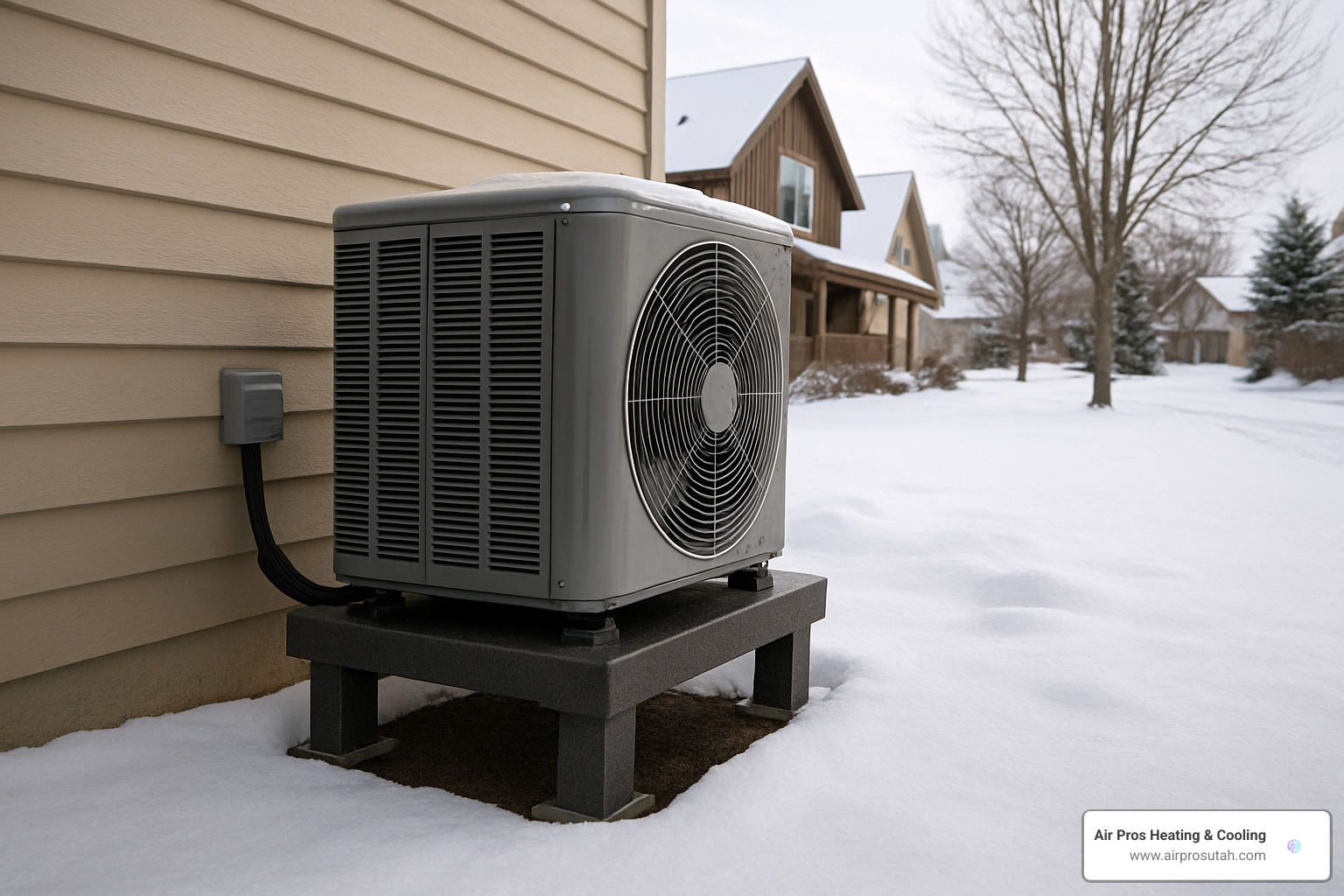
Site Preparation Checklist
Outdoor unit placement requires careful consideration of several factors. We install composite pads that won't crack or settle over time, providing a stable, level foundation. The pad should be liftd about 9 inches to clear typical snowfall of 6-8 inches in Utah's valleys and foothills.
Clearance requirements are specific and important. The unit needs at least 24 inches of clearance on the sides for airflow and service access, and 60 inches above for proper air discharge. We also consider proximity to windows, decks, and property lines to minimize noise impact on occupants and neighbors.
Drainage is another consideration. We ensure the site slopes away from the foundation and won't collect water during spring snowmelt or summer storms. Poor drainage can lead to ice formation and reduced efficiency during winter operation.
Electrical & Refrigerant Rules
Electrical work must meet current codes and safety standards. We install new disconnect boxes and electrical whips rather than reusing old components. This ensures reliable connections and meets warranty requirements from equipment manufacturers.
Refrigerant handling is strictly regulated by EPA rules. We use certified recovery equipment to capture existing refrigerant before removing old systems. This prevents environmental damage and ensures compliance with EPA 608 regulations.
Breaker sizing is critical for safe operation. Heat pumps draw significant current during startup, so we calculate exact electrical loads and install appropriately sized breakers and wiring. This prevents nuisance tripping and ensures safe operation.
Order Equipment & Materials
Equipment ordering requires careful coordination to ensure all components arrive on schedule. We typically order indoor units, outdoor units, refrigerant line sets, electrical components, and smart thermostats as a complete package.
Line sets are custom-sized for each installation to minimize refrigerant volume and maximize efficiency. We use UV-resistant line hide to protect copper lines from weather and physical damage while maintaining a clean appearance.
Smart thermostats are increasingly popular and provide improved control and energy monitoring. We recommend models that integrate well with heat pump operation, providing features like auxiliary heat lockout and performance monitoring.
For comprehensive information about our installation services, visit our Heat Pump Installation services page.
Step 4: Professional Heat Pump Installation Day
Heat pump installation day is when everything comes together. Most installations take 4-8 hours, though complex projects or larger homes may require additional time. Our team arrives with all necessary equipment, materials, and safety gear to complete the job efficiently and safely.
The process begins with site protection and equipment staging. We lay protective coverings on floors and walkways, set up work areas, and review the installation plan with the homeowner. This initial setup ensures smooth workflow and protects your property during the installation process.
Old equipment removal is the first major task. We safely disconnect and remove existing heating and cooling equipment, following EPA guidelines for refrigerant recovery. This includes capping gas lines if present and disposing of old equipment responsibly.
New equipment installation follows a systematic approach. We install the outdoor unit first, ensuring proper leveling and clearances. The indoor unit follows, with careful attention to drainage and airflow requirements. All connections are made using professional-grade materials and techniques.
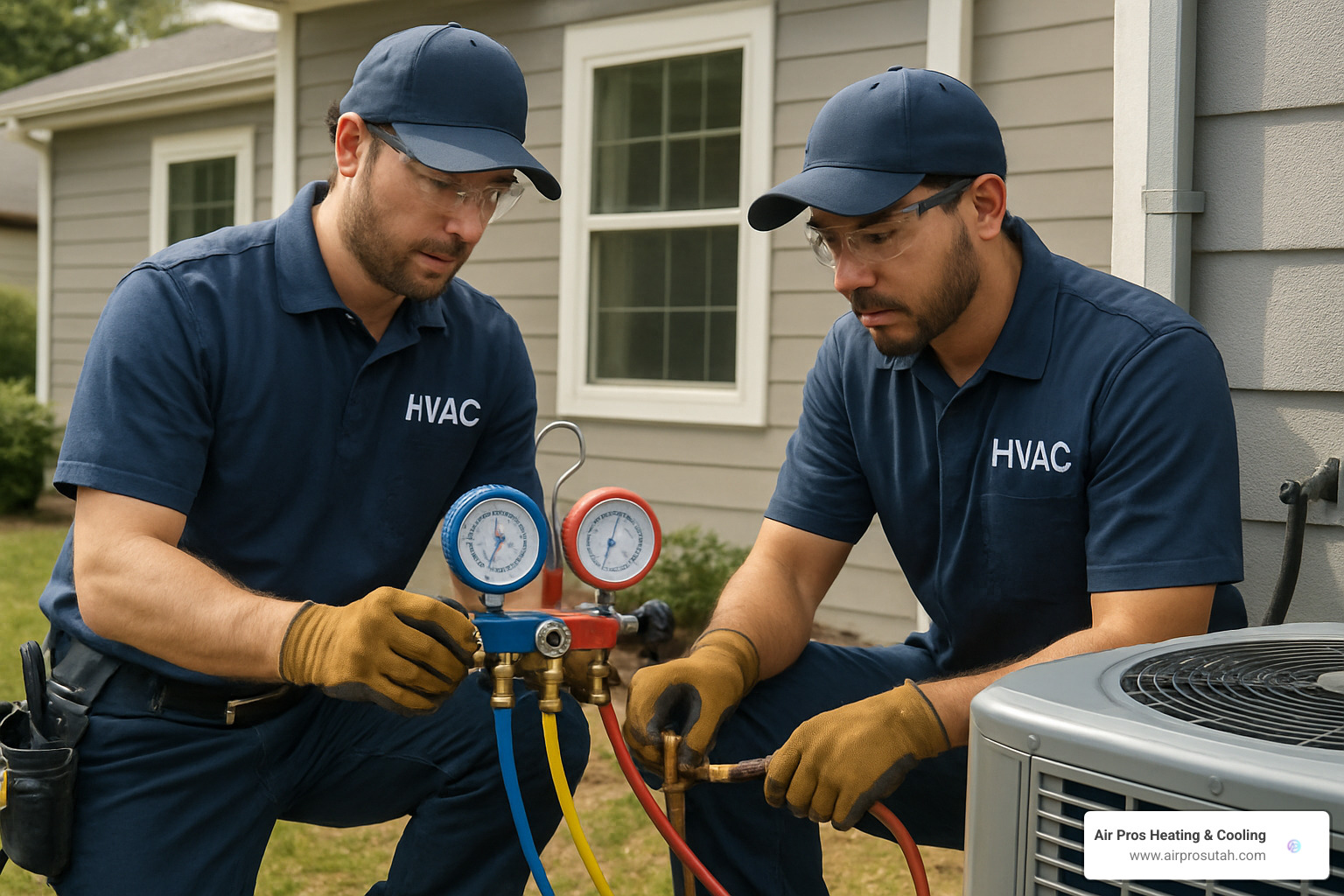
4-8-Hour Standard Timeline
A typical installation day follows a predictable schedule. We arrive early morning and begin with equipment staging and site preparation. The first 2-3 hours involve removing old equipment and preparing installation sites.
The middle phase focuses on installing new equipment and making connections. This includes mounting units, running refrigerant lines, and completing electrical connections. We take time to ensure all connections are secure and properly insulated.
The final phase involves system commissioning and testing. We evacuate the refrigerant system, check for leaks, and charge the system with the proper amount of refrigerant. This process takes 1-2 hours but is critical for reliable operation.
Key Quality Steps Not to Skip
Professional installation requires several critical steps that separate quality work from "good enough" installations. We perform nitrogen purge and vacuum decay tests to ensure refrigerant lines are clean and leak-free. These tests take extra time but prevent costly callbacks and ensure optimal performance.
Pressure testing verifies system integrity before adding refrigerant. We use digital gauges and follow manufacturer specifications exactly. This attention to detail prevents refrigerant leaks that can reduce efficiency and damage the environment.
Brazing copper connections requires skill and proper equipment. We heat connections to at least 1,200°F using oxygen-acetylene torches, ensuring strong, leak-free joints that last the system's lifetime.
Commissioning & Owner Walkthrough
System commissioning is the final quality check that ensures everything works correctly. We test heating, cooling, defrost, and emergency heat modes for 15-20 minutes each, verifying proper operation and performance.
The owner walkthrough is an important part of our service. We explain system operation, demonstrate thermostat programming, and review maintenance requirements. This education helps homeowners get maximum benefit from their new system.
Warranty registration is completed during the walkthrough. We register the equipment with manufacturers and provide all documentation needed for warranty coverage. This protects your investment and ensures service support throughout the system's life.
Step 5: Post-Installation Care, Monitoring & Savings
The heat pump installation process doesn't end when our crew leaves. Proper post-installation care ensures your system operates efficiently for its full 15-20 year lifespan while maximizing energy savings and comfort.
Regular maintenance is essential for optimal performance. We recommend bi-annual service visits - once before the heating season and once before cooling season. These visits include coil cleaning, refrigerant level checks, electrical connection inspection, and filter replacement.
Filter maintenance is something homeowners can handle themselves. We recommend checking filters monthly and replacing them every 1-3 months depending on usage and local air quality. Clean filters ensure proper airflow and prevent system strain.
Performance monitoring helps identify issues early and track energy savings. Modern smart thermostats provide detailed energy usage data, allowing you to see exactly how much your heat pump is saving compared to your old system.
The return on investment for heat pump installation is typically excellent. With proper installation and maintenance, most homeowners see payback periods of 5-10 years through reduced energy bills, with additional benefits from available tax credits and rebates.
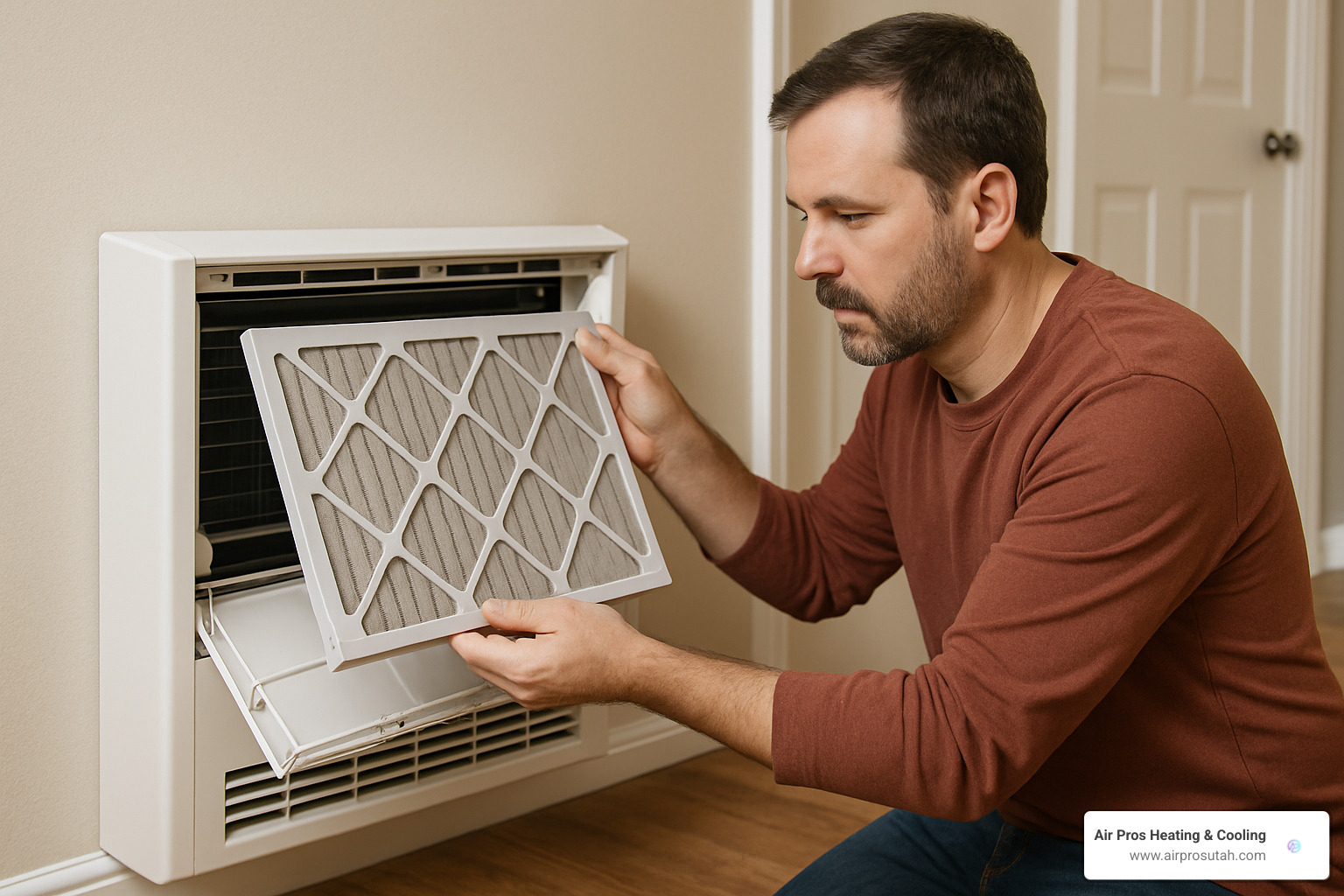
Create a Preventive Maintenance Schedule
Preventive maintenance is the key to long-term heat pump performance and efficiency. We offer comprehensive maintenance plans that include bi-annual service visits, priority scheduling, and discounted repair rates.
Spring maintenance focuses on preparing the system for cooling season. We clean outdoor coils, check refrigerant levels, test electrical connections, and verify proper airflow. This service ensures efficient operation during hot summer months.
Fall maintenance prepares the system for heating season. We inspect heat strips (if present), test defrost controls, clean indoor coils, and verify proper operation of all heating modes. This preparation prevents mid-winter breakdowns when you need heat most.
Our Heat Pump Maintenance service includes detailed inspections, performance testing, and recommendations for optimal operation.
Track Performance & Utility Bills
Monitoring your heat pump's performance helps ensure you're getting expected energy savings and can identify potential issues early. Modern systems provide detailed performance data through smart thermostats and monitoring apps.
Key performance indicators include coefficient of performance (COP), which measures heating efficiency, and energy usage compared to outdoor temperature. These metrics help identify when service might be needed or if the system isn't performing optimally.
Utility bill tracking is the most direct way to measure savings. Most homeowners see 30-50% reductions in heating costs after switching to heat pumps, with exact savings depending on the system replaced and local utility rates.
Claim Your Rebates & Tax Credits
Don't forget to claim available incentives after installation. The 25C tax credit allows you to claim 30% of installation costs up to $3,200 when filing your taxes. We provide all necessary documentation to support your claim.
Future rebate programs under the High-Efficiency Electric Home Rebate (HEEHRA) and Whole Home Energy Reduction (HOMES) programs will provide additional savings. These programs are expected to launch in 2024 and could provide thousands in additional rebates.
We help our customers steer these programs and ensure they receive maximum benefits. Our team stays current on available incentives and helps with documentation requirements.
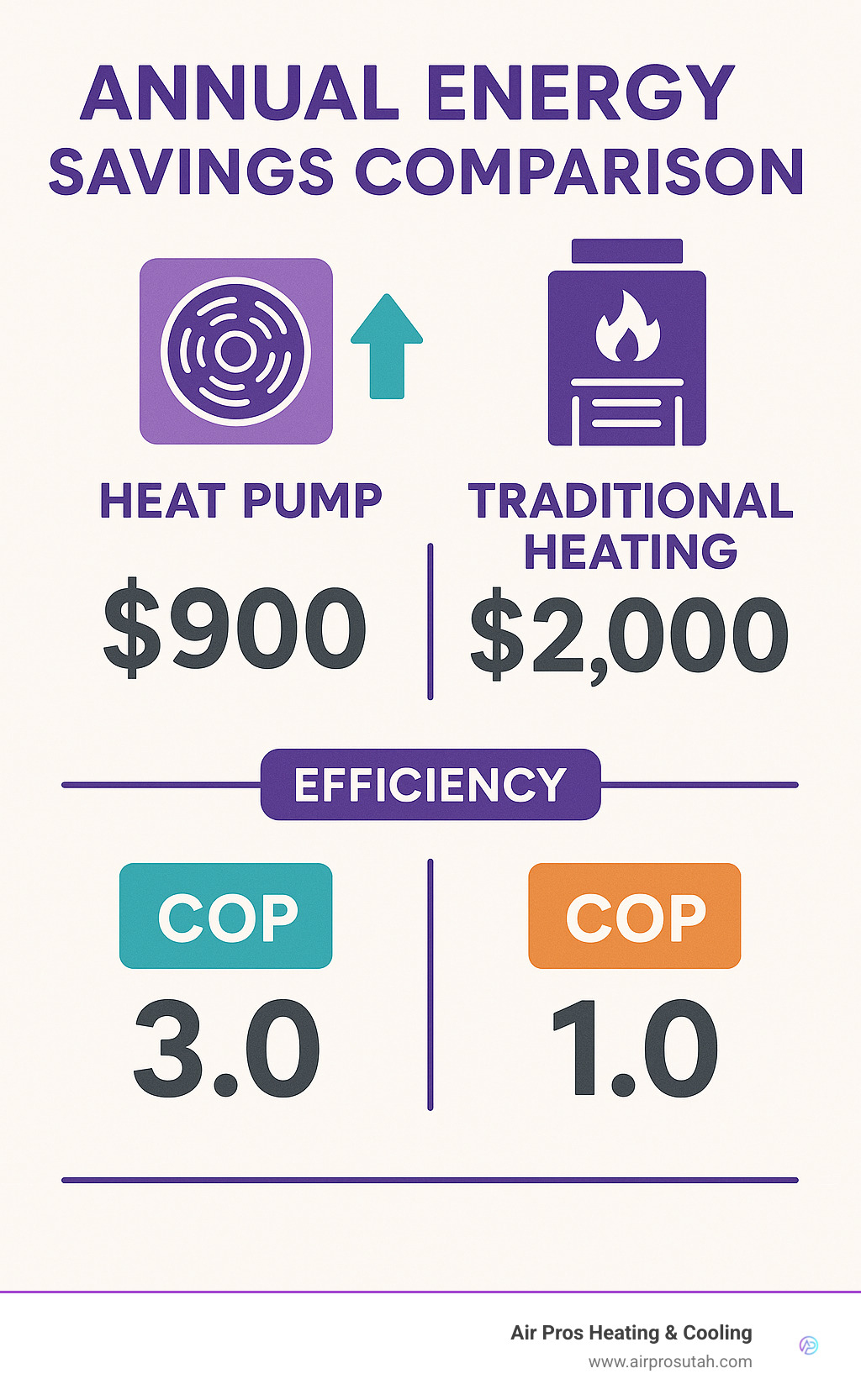
Frequently Asked Questions about Heat Pump Installation
How long does a typical heat pump installation take?
Most heat pump installations take 4-8 hours for a complete system replacement. This includes removing old equipment, installing new indoor and outdoor units, connecting refrigerant lines, completing electrical work, and commissioning the system.
Several factors can extend installation time. Homes requiring ductwork modifications, electrical upgrades, or complex site preparation may need additional time. Weather conditions can also affect outdoor work, though we use portable tents when necessary to continue work safely.
Larger homes or complex installations may require 2-4 days, especially if extensive ductwork modifications are needed. We provide detailed timelines during the planning phase so homeowners know what to expect.
Can a heat pump be installed in an older, duct-free home?
Absolutely! Ductless mini-split systems are perfect for older homes without existing ductwork. These systems require only small holes through exterior walls for refrigerant lines, making installation minimally disruptive.
Ductless systems offer several advantages for older homes. They provide room-by-room climate control, allowing you to heat and cool only occupied spaces. They're also highly efficient and can be installed without major renovations.
Historic homes in Salt Lake City, Park City, and other Utah communities are excellent candidates for ductless systems. We can design systems that provide whole-home comfort while preserving the character and integrity of older architecture.
How do I know my new heat pump is running efficiently?
System commissioning provides baseline performance data that we review with homeowners. This includes heating and cooling capacity, energy usage, and efficiency metrics under various operating conditions.
Smart thermostats provide ongoing performance monitoring, showing daily and monthly energy usage, runtime data, and efficiency trends. Unusual patterns or increased energy usage can indicate potential issues requiring attention.
Regular maintenance visits include performance testing and comparison to commissioning data. We measure refrigerant pressures, electrical draw, airflow, and temperature differentials to ensure optimal operation.
Conclusion
Heat pump installation represents a smart investment in your home's comfort, efficiency, and environmental impact. The five-step process we've outlined - assessment, selection, preparation, installation, and ongoing care - ensures you get maximum benefit from your new system.
The key to successful heat pump installation is working with experienced professionals who understand the technology, local climate conditions, and proper installation techniques. Avoiding the 90% misinstall trap requires careful planning, proper sizing, and attention to quality details throughout the process.
At Air Pros Heating & Cooling, we've helped hundreds of Utah families make the switch to efficient heat pump systems. Our personalized approach ensures each installation is custom to your specific needs, from the initial assessment through ongoing maintenance and support.
Whether you're in Salt Lake City, Park City, or any of the communities we serve throughout the SLC Valley, we're here to help you achieve year-round comfort with a professionally installed heat pump system. Our expertise with both ducted and ductless systems means we can find the right solution for any home.
Ready to start your heat pump journey? Contact us today to schedule your home assessment and take the first step toward more efficient, comfortable heating and cooling. Visit our Heat Pump Installation page to learn more about our services and schedule your consultation.

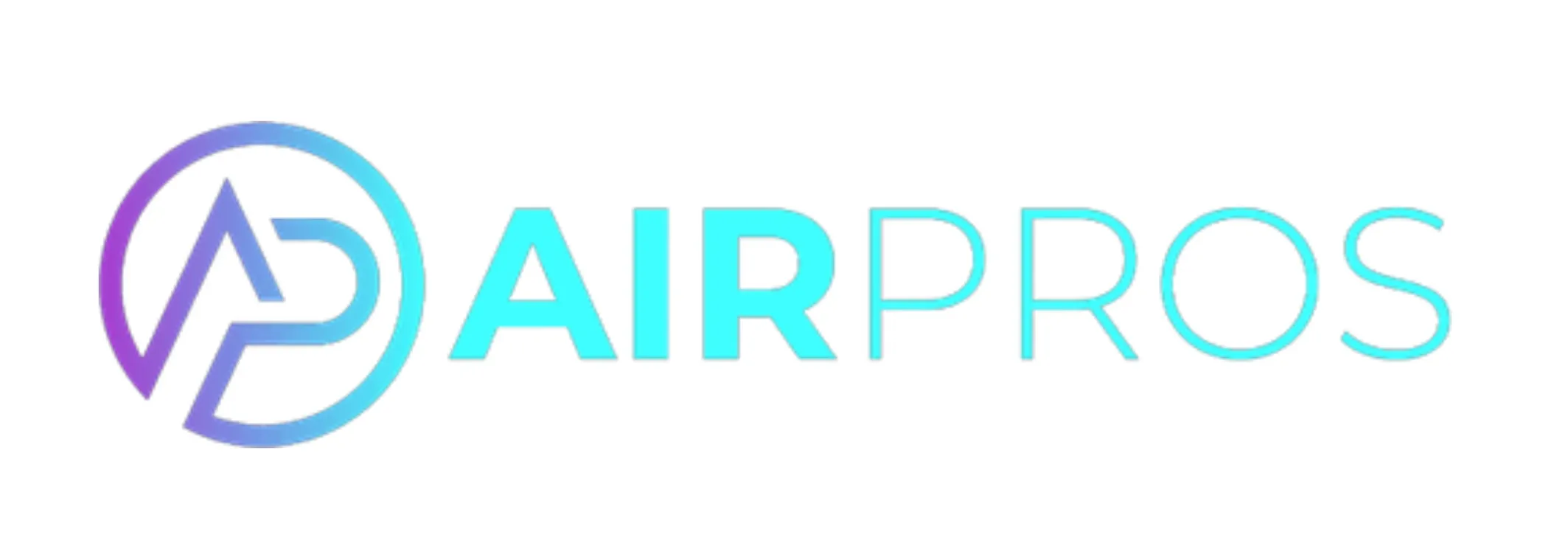
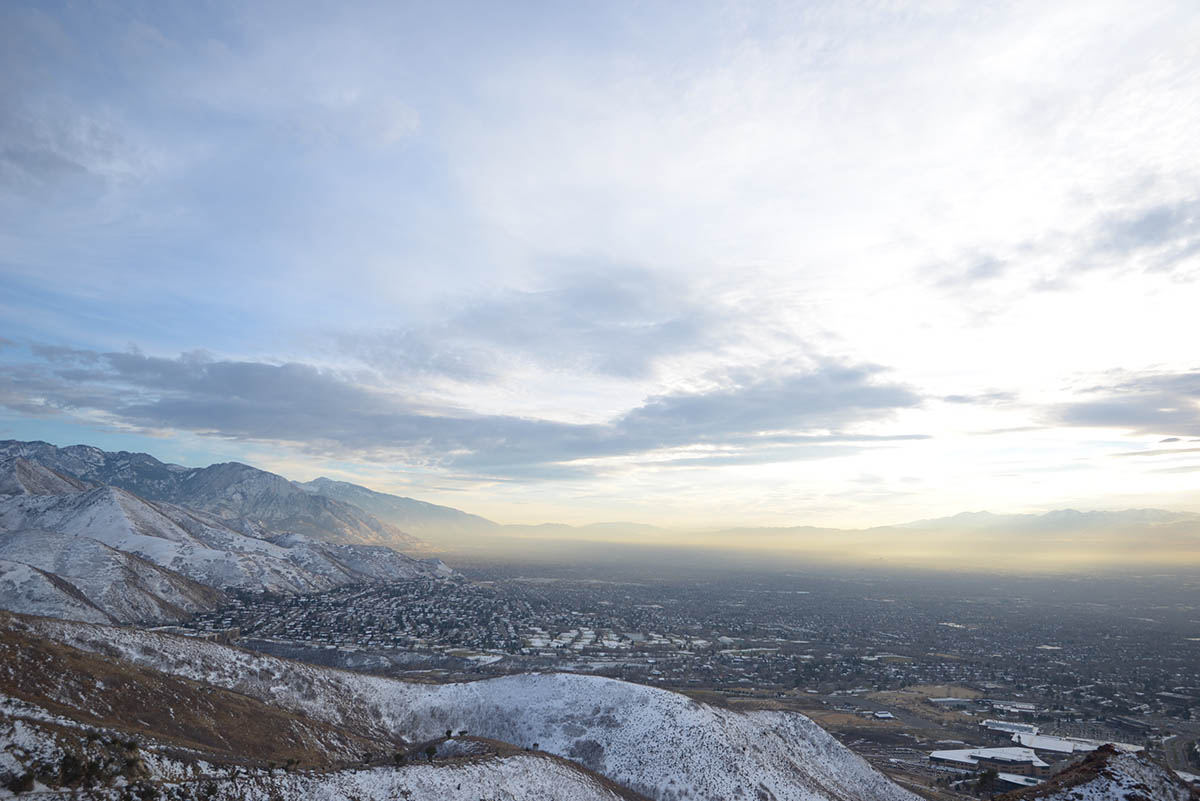
.jpg)